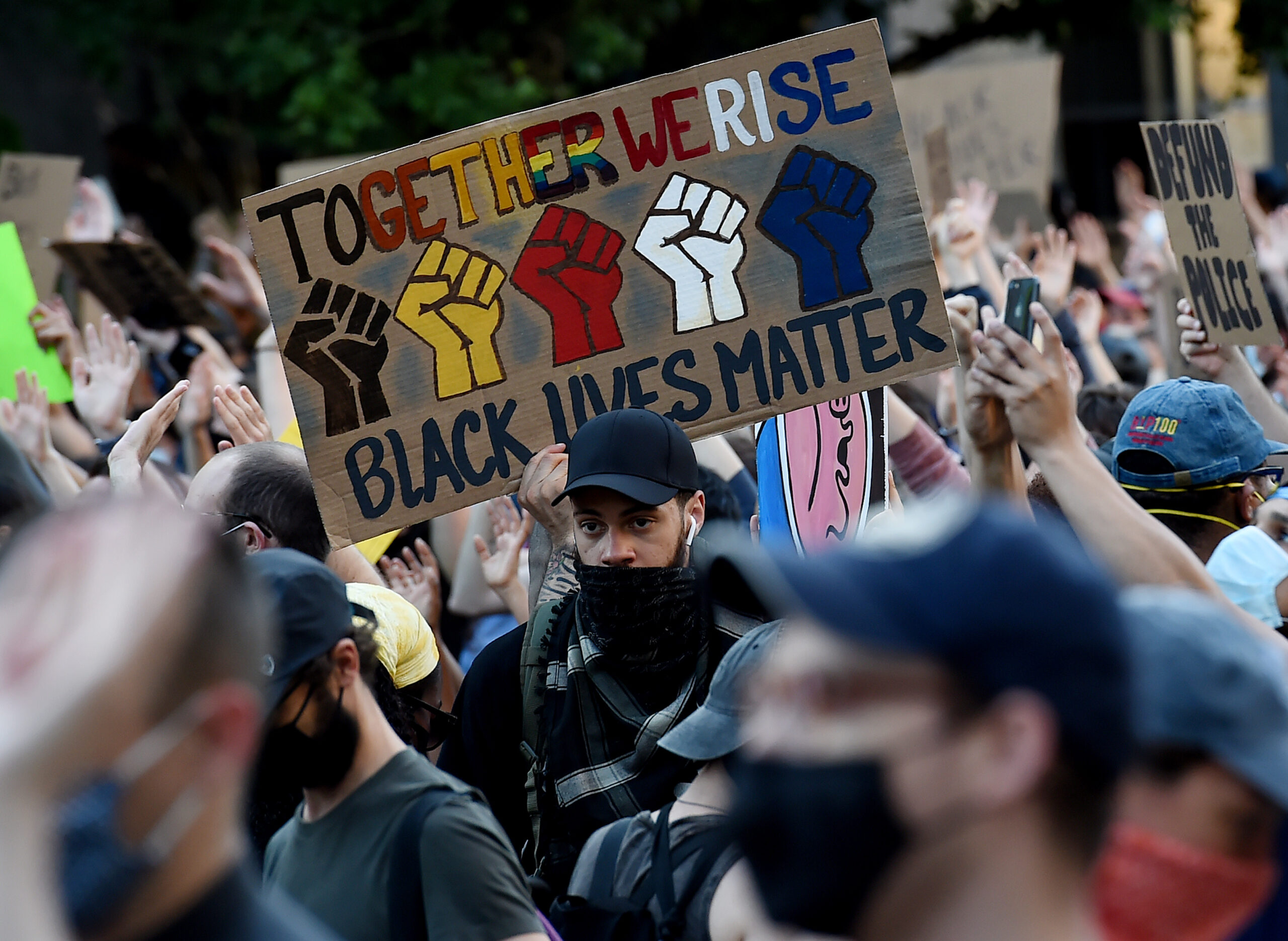Demonstrations against racism and police brutality are likely to continue across the US in the coming weeks, unless President Trump changes his approach towards them.
He has used increasingly bullish rhetoric against activists in recent days, this week calling protests ‘domestic acts of terror’. This lack of conciliation is likely to sustain turnout at protests over the next few weeks, as well as tensions between participants and security forces. This means we anticipate continued clashes with law enforcement.
Trump has made few overtures to activists, and has instead conflated all protests with looting and vandalism that has also occurred. This is despite most demonstrations being peaceful, and civil disorder often taking place away from organised gatherings. He also demanded that mayors and governors establish ‘an overwhelming law enforcement presence’ until protests stop. He said that if they refused to do so, he would use powers in the Insurrection Act of 1807 to deploy the military to affected areas. But unless state governors give permission for deployments, they would not be legal. The only exception to this is Washington DC, where there are few limits on who the president can deploy.
Another avenue for Trump to deploy federal forces would be to declare martial law. While there would still be limits on deployments, we think there is a reasonable possibility he would ignore these. A president has not authorised martial law since the 1920s. But state governors have since done so during periods of disorder, most recently in 1963. Trump could use such precedent to justify area-specific declarations. These would most likely be to areas where state or local security forces are not responding in the way Trump desires. Such deployments would, in our view, make confrontations between different branches of security forces, and contradictions in the response to demonstrations, more likely.
Far from deterring activists, Trump’s antagonism appears to have angered them, emboldened them to call for more demonstrations, and encouraged more people to join. The tables at the end of this report shows all the calls for upcoming gatherings that we have seen in our monitoring of social media. But protests will almost certainly occur much more widely than this. The promotional material for almost all the planned demonstrations that we have seen for the coming days has called on activists to remain peaceful and avoid looting and vandalism.
Vandalism and looting is still highly likely alongside upcoming gatherings, however. As well as opportunists seeking to exploit thinly-stretched security forces, there have been indications that some right-wing extremists have been involved in commotion to exploit racial tensions. This does not appear to have been particularly widespread, however. The governor of Minnesotan has said that he believed far-right groups were responsible for some of the looting in Minneapolis on the weekend. And Trump has accused Antifa, a disparate left-wing movement, of being behind the civil commotion. But a leaked FBI field report cited yesterday in The Nation suggests that there is little evidence for this.
Governments across the country have implemented curfews in the past week to try to quell looting and vandalism. And officials have in recent days been expanding these. For example, after vandalism and looting in Manhattan on Monday, the mayor of New York expanded a curfew to 2000-0500hrs (compared with 2300-0500hrs earlier in the week), and extended it until at least 7 June. Such attempts across the country seem to have had some success: looting was less widespread last night than the previous few nights. The map below shows locations where the authorities have reportedly enforced curfews in the past week, as well as where state governors have activated the National Guard.

Most upcoming demonstrations are planned for outside curfew hours. And most of these will probably be peaceful. But a minority of activists have shown a willingness to refuse to comply with curfew or clearance orders. And this is a trigger for the use of force by police. Last night, such violence occurred in Atlanta, Los Angeles, New York, Philadelphia, Seattle and Washington DC. Law enforcement in several cities have also continued to use force in an unprovoked or disproportionate manner. For example, security forces used tear gas against a peaceful gathering at Lafayette Square in Washington DC on Monday.
Trump presently appears unwilling to de-escalate tensions. He could do this by emphasising that he thinks protesters’ demands are worthy, or by expressing his support for the arrest of the remaining police officers involved in the death of George Floyd. But we suspect lots of people would be sceptical of Trump’s sincerity in supporting the broad anti-racism movement. Unless Trump fully acknowledges the broader issues of institutional racism in the US, and commits to a genuine plan to address the issue, protests will probably continue.
In the meantime, continued bullishness from President Trump will sustain the likelihood of protests, and violence between participants and security forces, in the coming weeks. This includes further rhetoric conflating protesters with terrorists, or threatening force against participants. There are also potential triggers for an uptick in anger. These include the death of a participant of a protest due to excessive police force (or at least perceived excessive force). Five people have reportedly died at demonstrations so far, although none of these has attracted significant media attention or been directly blamed on unwarranted police force.
The coming weekend will probably be an indicator for the momentum that the protests have, and so how long they are likely to continue. A larger turnout than last week at demonstrations across the country would indicate that the president’s dismissal of the protests and threats to use force against them have meant the movement has attracted more supporters. Oppositely, a decline in participation would suggest that official attempts to discourage attendance are working, despite persistent community anger.



Image: Olivier Douliery/AFP/Getty Images







